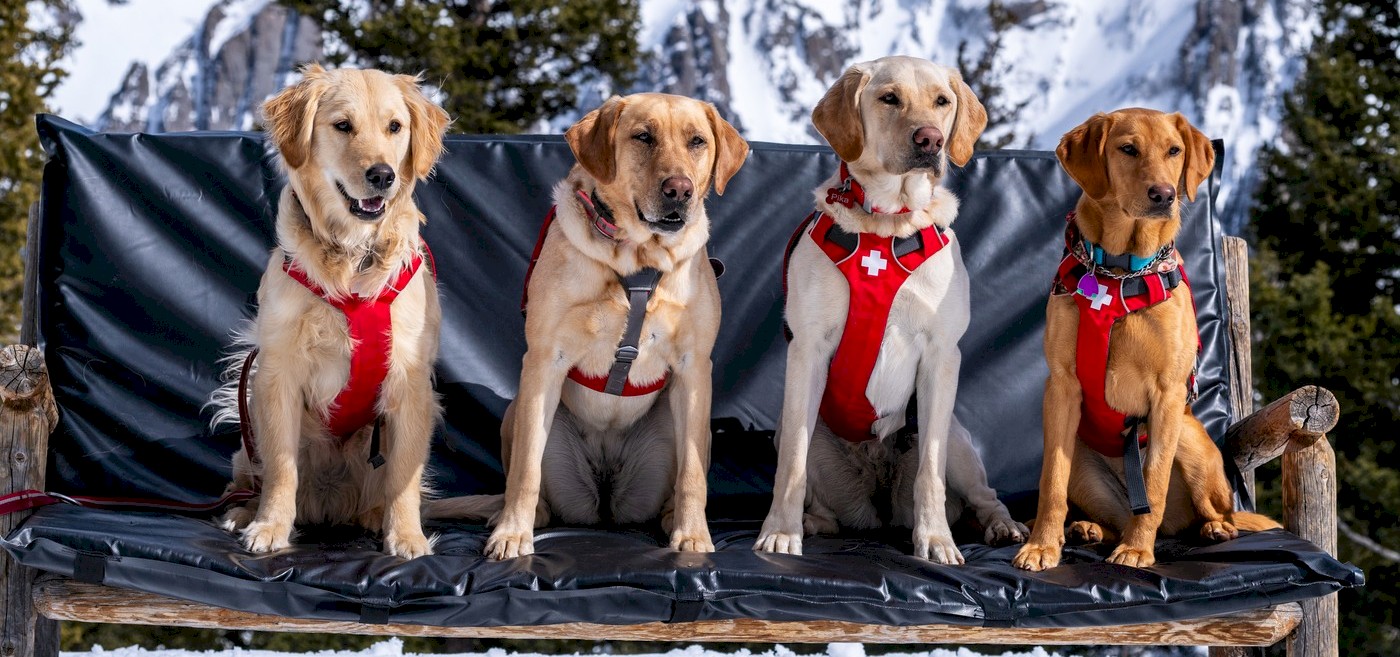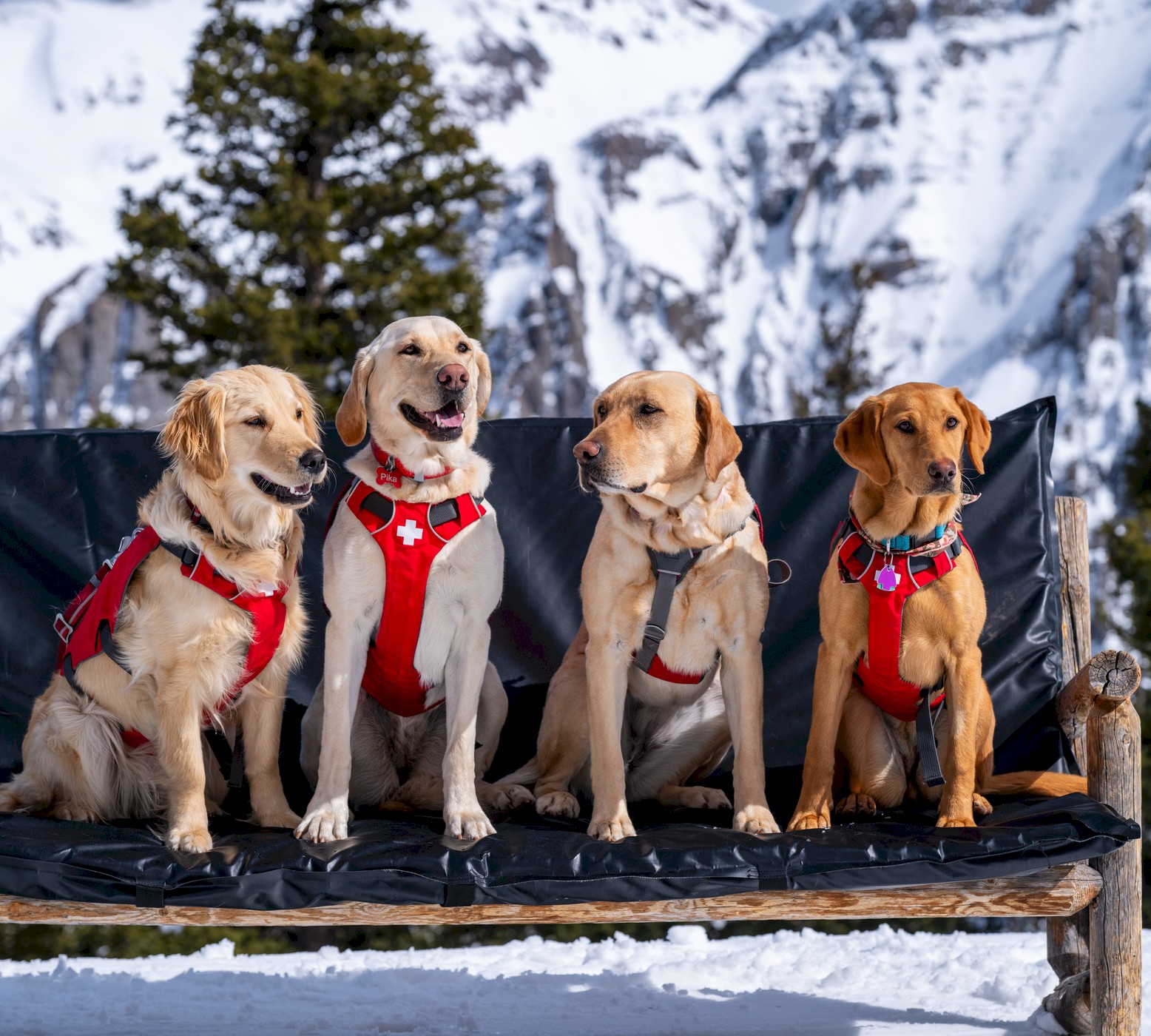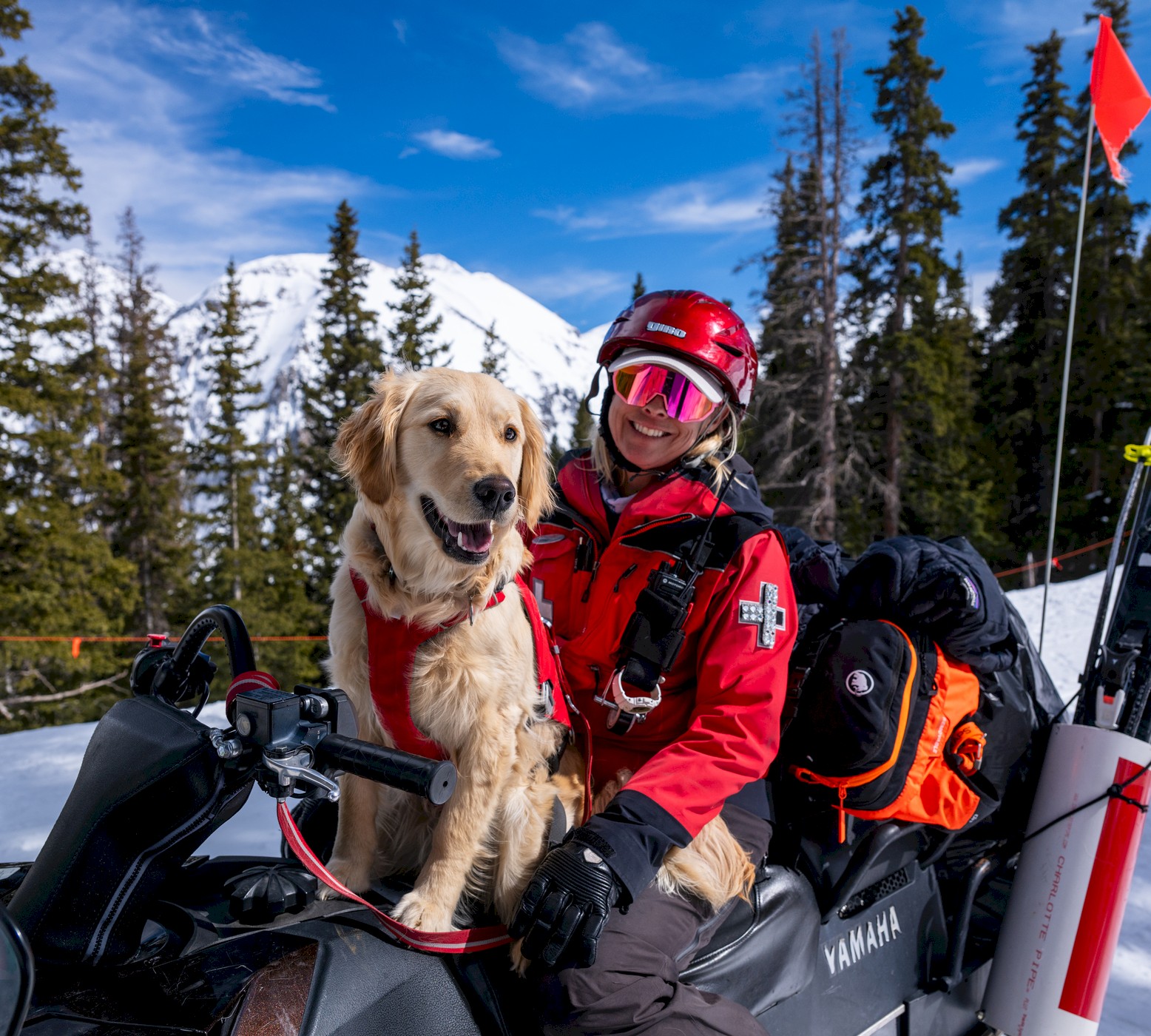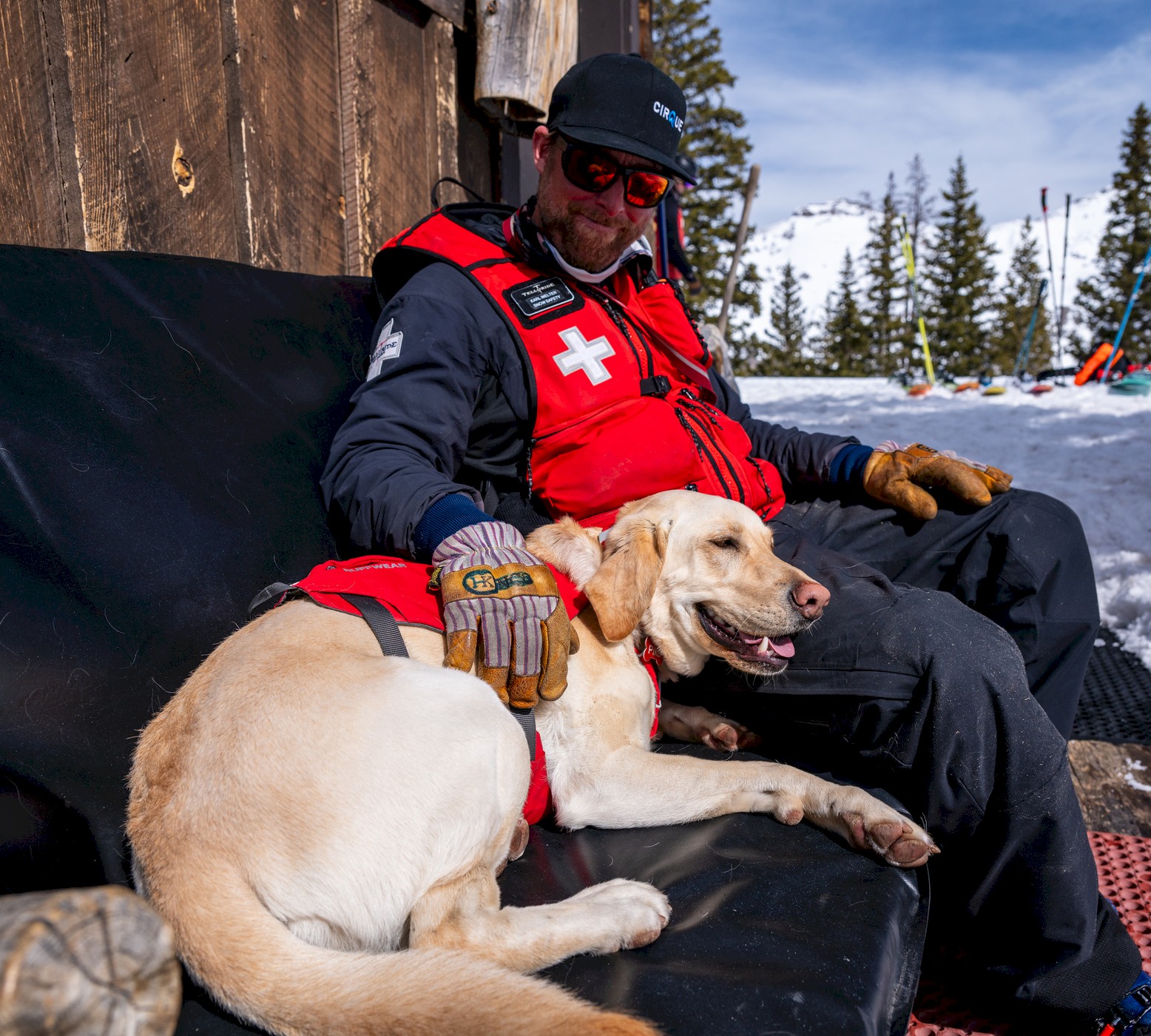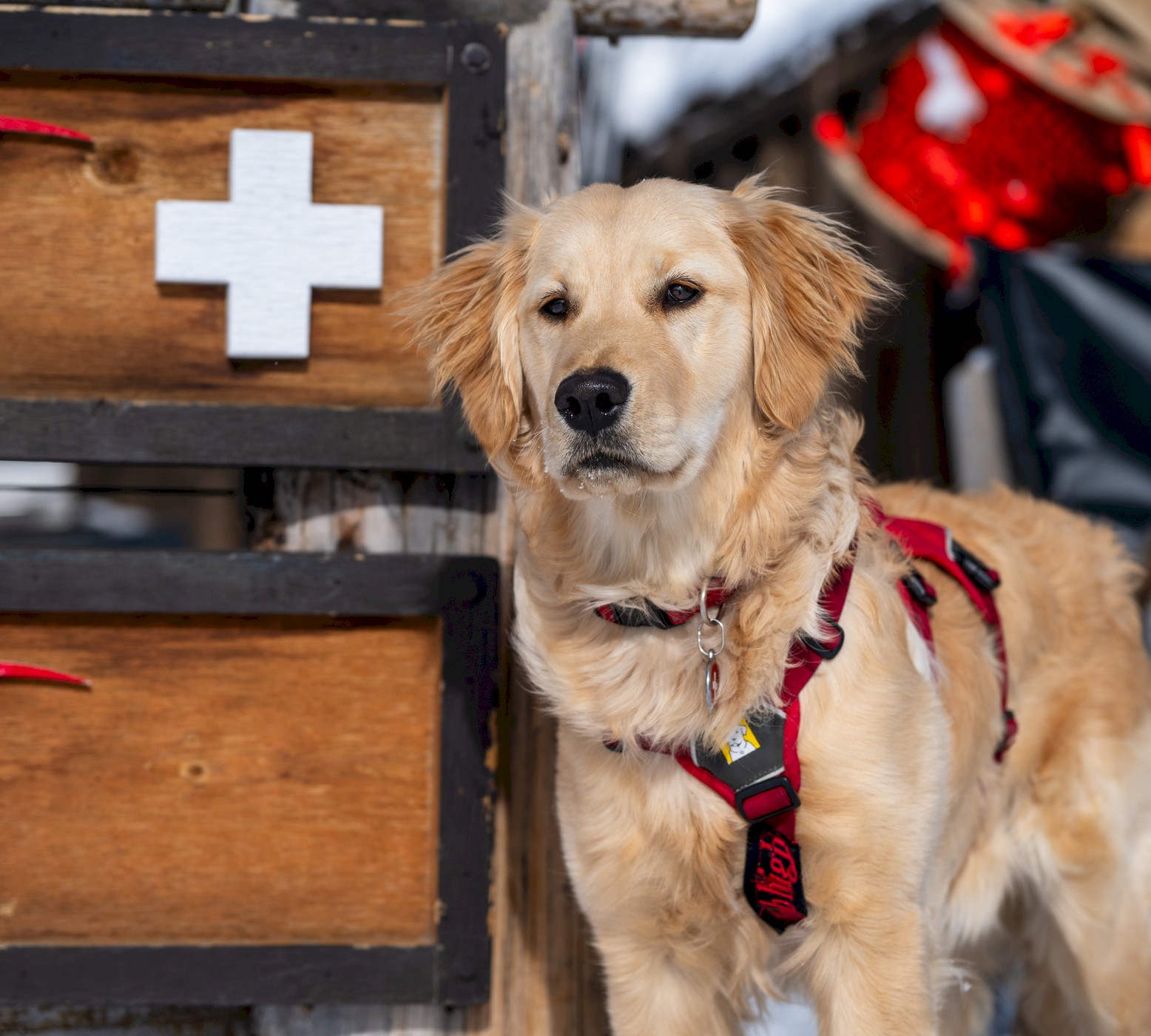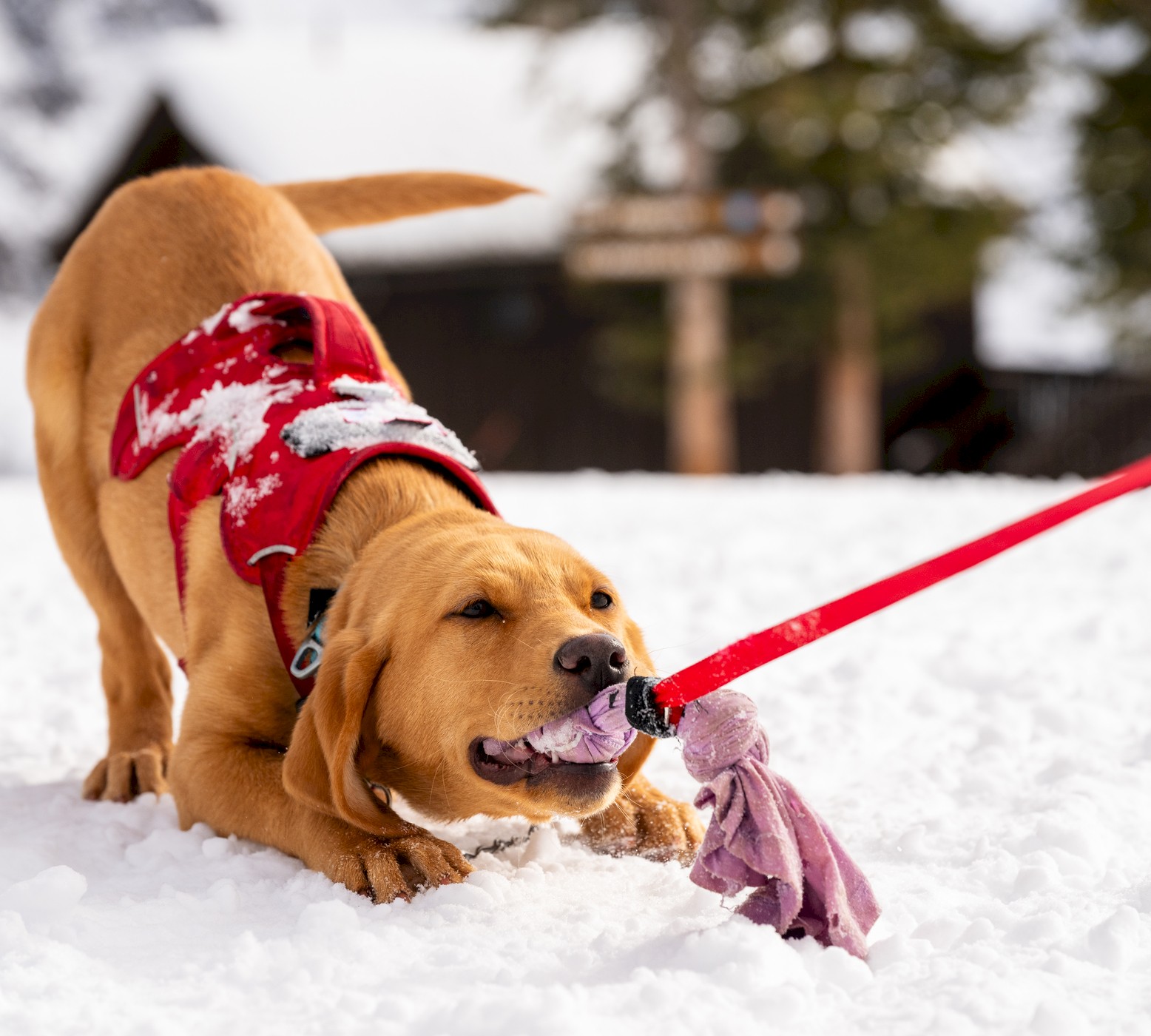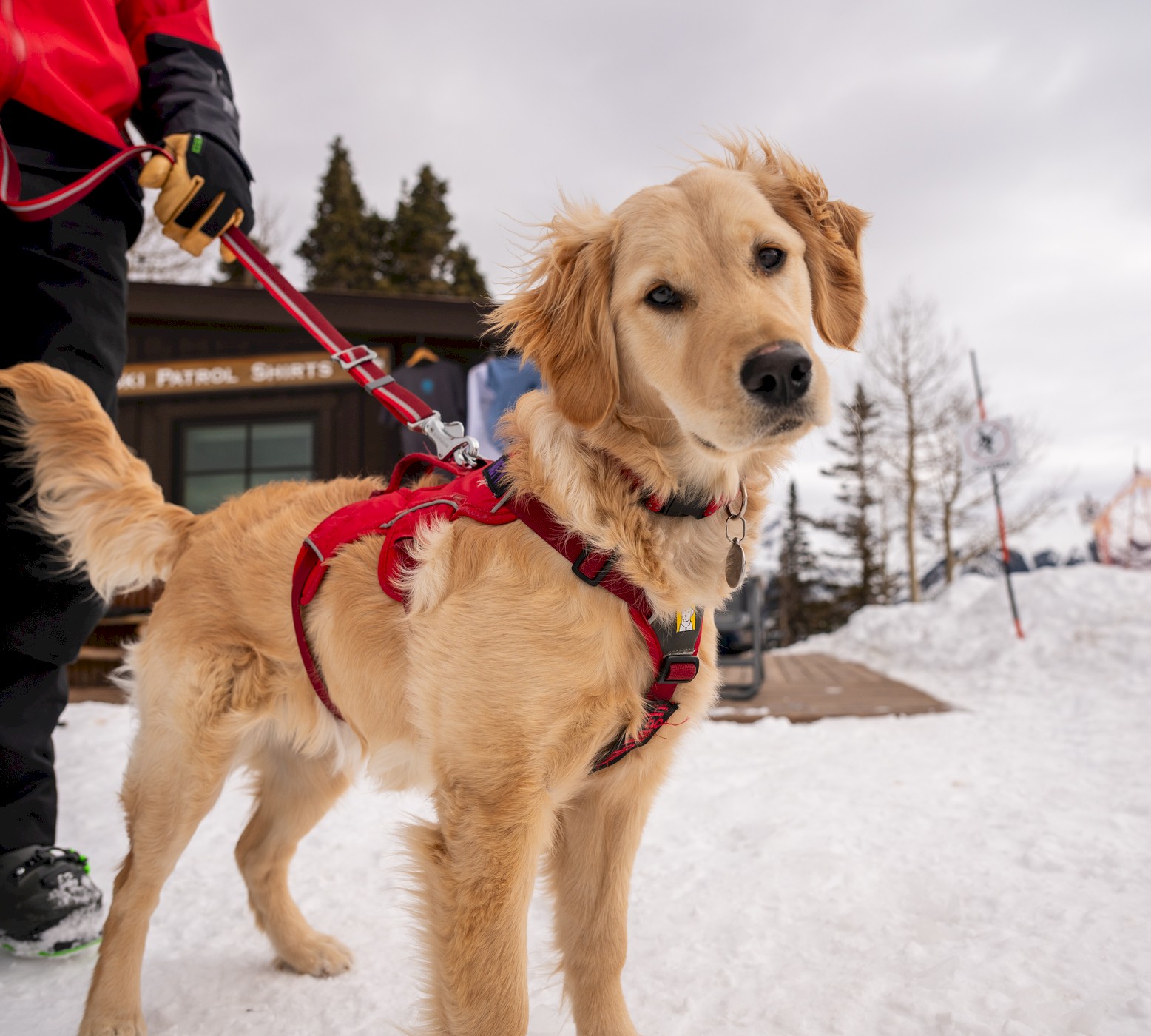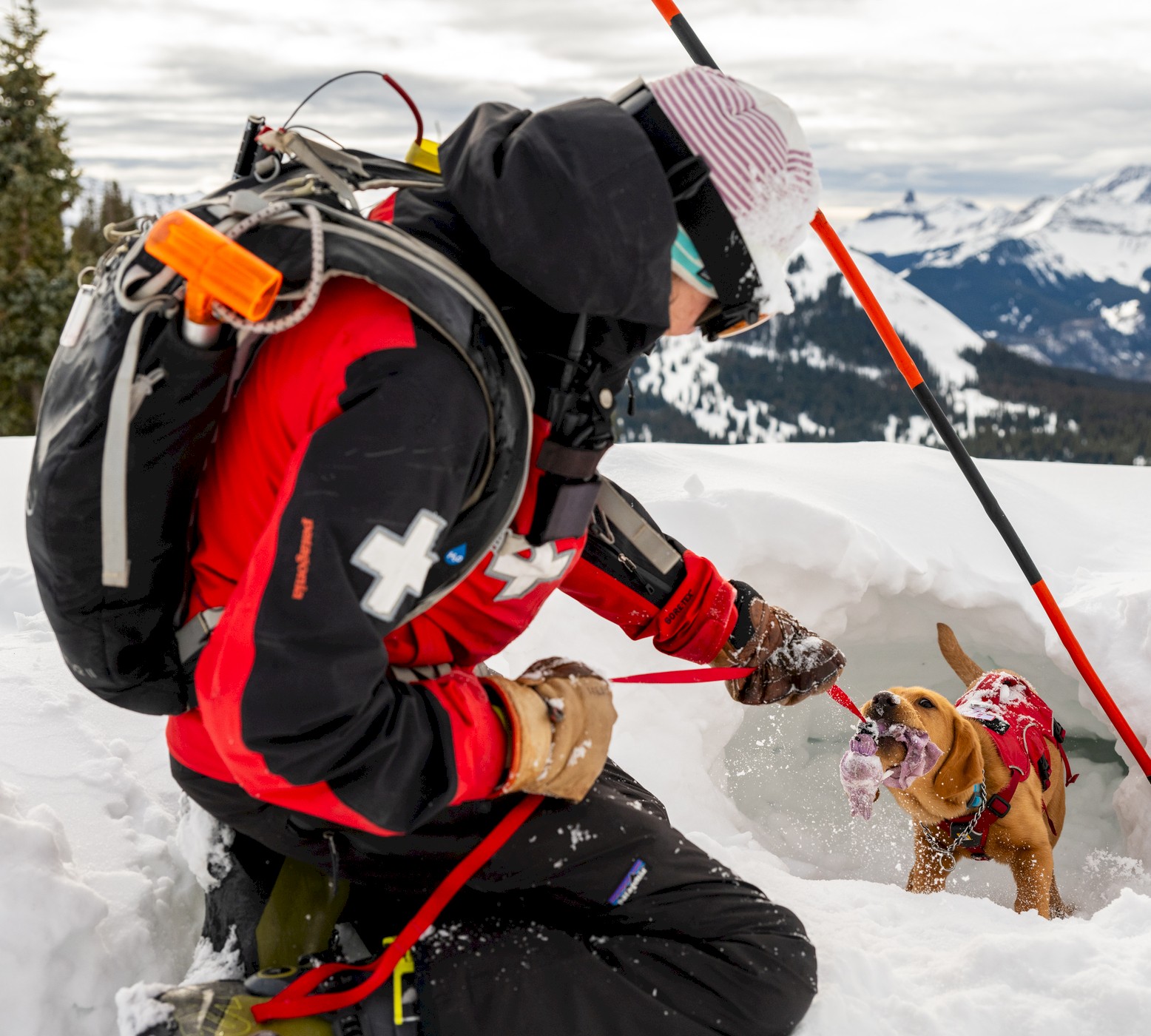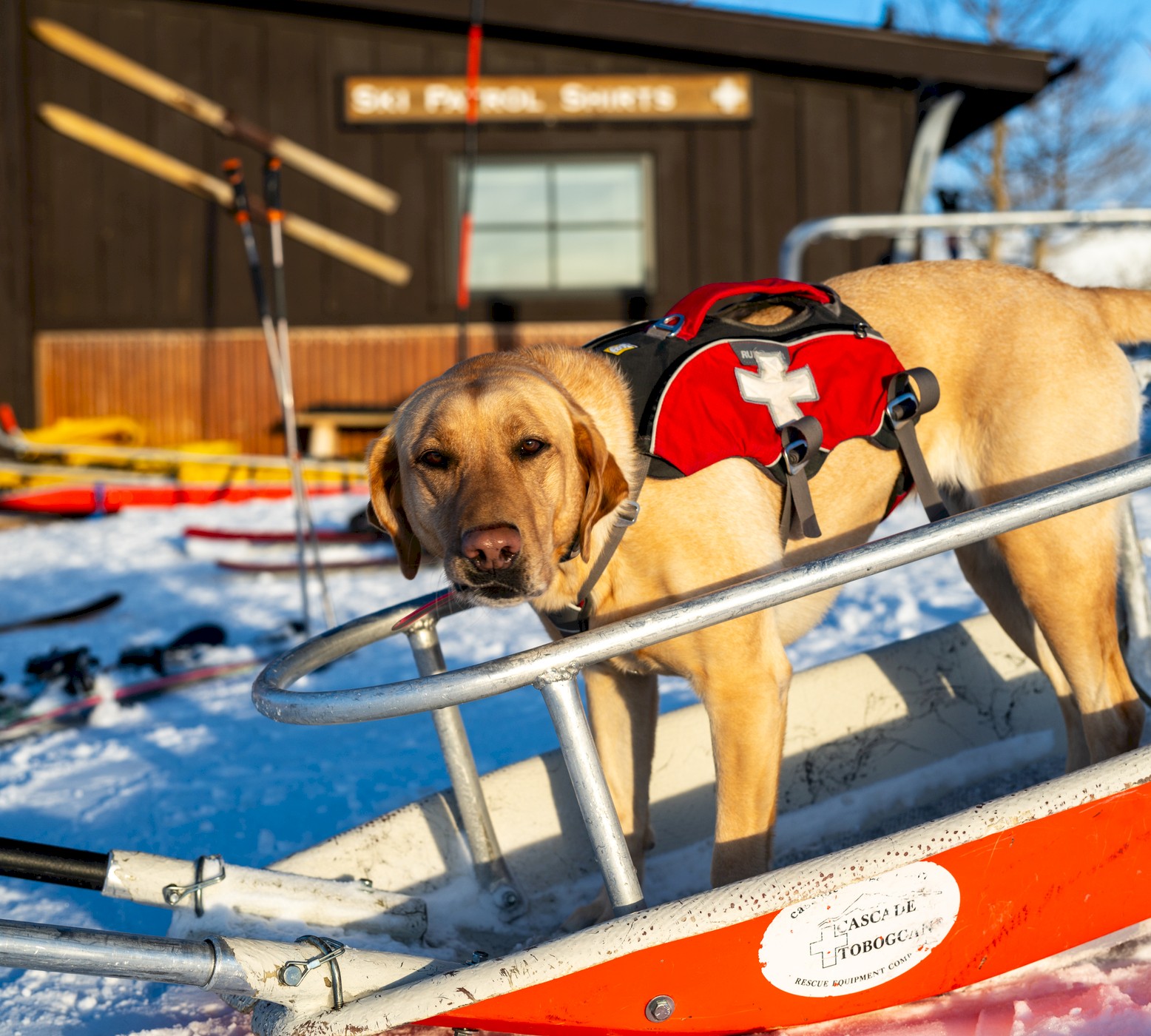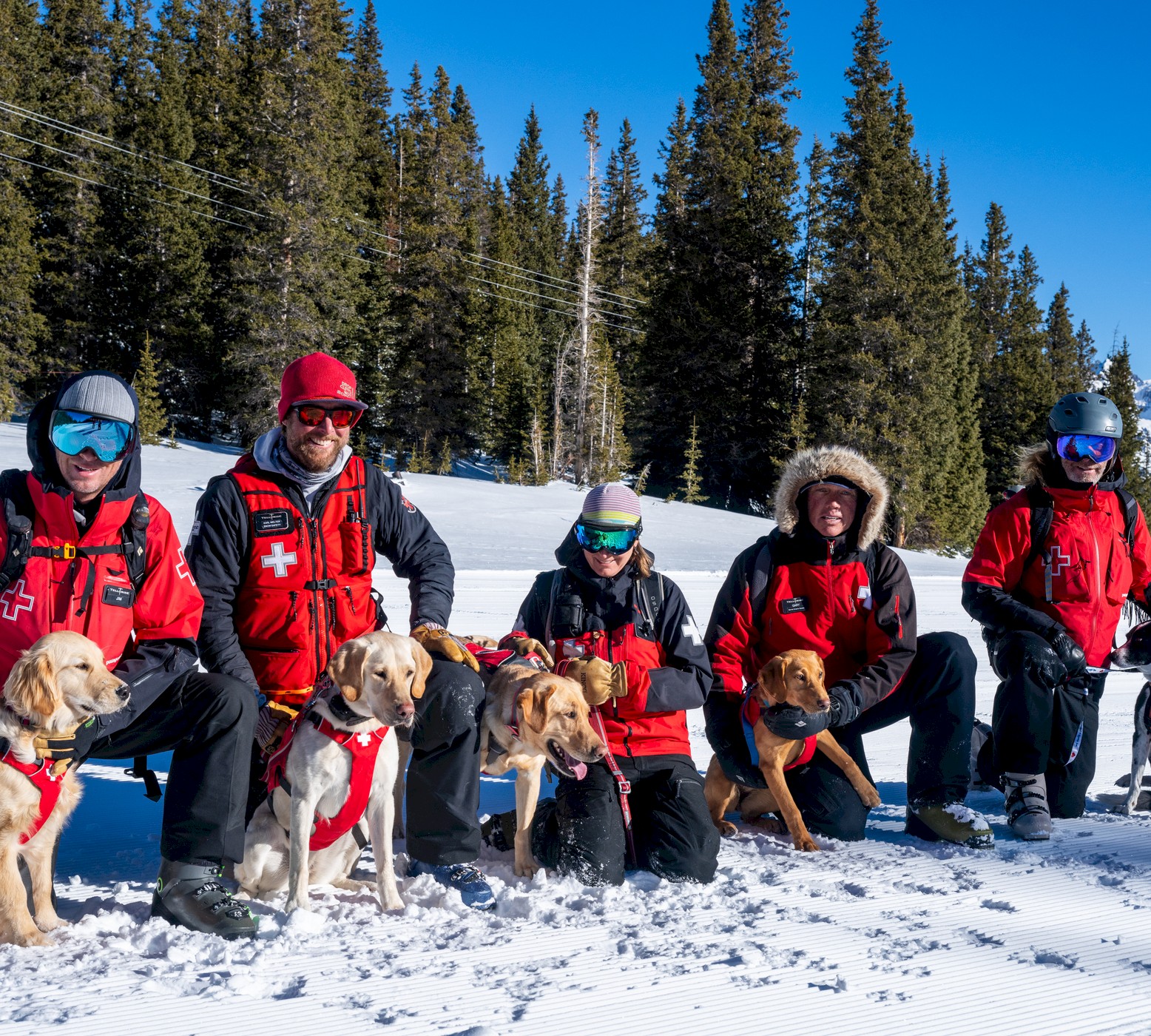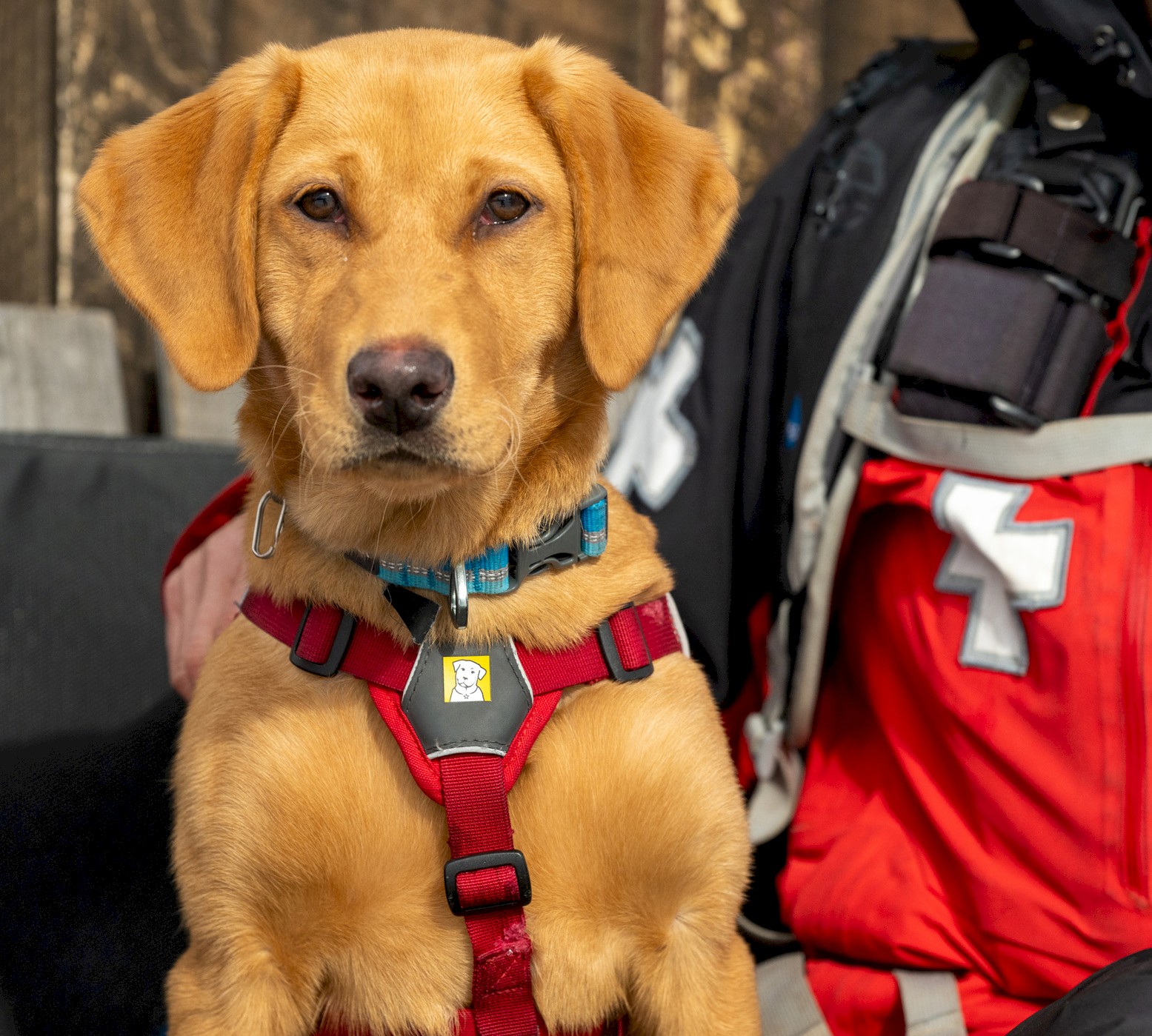Puppy Love
By Erin Spillane
Photos and video by Brett Schreckengost
Pika is pretty darn cute. The 3-year-old yellow Labrador, named for the small, equally cute high-alpine mammal, loves frisbee and gnawing on rawhide. Her human, Karl Welter, describes her as a “sweetheart” who enjoys belly rubs.
Pika, though, is also an avalanche dog, whose training at Telluride Ski Resort began when she was just 8 weeks old. Welter, a member of Telluride Ski Patrol and Pika’s handler, says that when she is at work Pika is focused and driven to perform the task at hand.
“As adorable as they are, it’s important to point out how much training they go through, why we chose the dogs we chose for this work and the importance of the work,” Welter stresses.
The ski resort’s director of snow safety, Jon Tukman, notes that the dogs are a key part of a comprehensive on-mountain program designed to keep skiers and snowboarders safe and free to enjoy their time on the mountain. “The dogs are an important tool in the arsenal,” Tukman says. “On the ski resort, they are a resource for us and our guests.”
Both have a point. The story of Telluride’s avalanche dogs is, naturally, one of their cuteness — they charm most anyone who encounters them — but it is also of their professionalism. These are highly trained working dogs with a key role to play in a mountain community.
Tradition & Training
Telluride’s tradition of avalanche dogs stretches back nearly 40 years to 1986, when ski patroller Gary Richard began working with his Labrador retriever, Lady Jane Watenpaws. It was a successful stint that led Gary and wife Kim Richard, also a patroller, to train a number of “avy dogs” over the years, including Lady Bee, who served for 13 years before she passed away last spring, and most recently a 1-year-old fox red Labrador, named SWE.
Nowadays, there is a team of seven avalanche dogs working on the ski resort whose handlers are all ski patrol members. The making of a good avalanche dog is lengthy and involved, according to Kim Richard, and “begins from the moment you decide you’re going to get a dog.” She goes on to explain that training commences when the dogs are just weeks old and focuses on consistency, repetition, association, anticipation, patience and praise. “The first two relate to the fact that everything you do with your dog has to be done the same over and over again, even when you are at home,” she remarks. The dogs are incredibly intelligent, so consistency and repetition will ensure an understanding of “what you want them to do in all situations. With associations, specific commands and tone of voice are associated with the behaviors you want from your dog. With anticipations, you are always thinking ahead, like how you are going to load your dog safely onto the chairlift. Patience and praise are critical. The end result of a search and rescue mission might be grave for us, but for them it’s a game.”
In addition to training and drills on the ski resort, and at home, the avalanche dogs and their handlers are required to gain certification from an external validating organization called Colorado Rapid Avalanche Deployment (C-RAD). C-RAD offers training and testing without bias, according to Kim Richard, who adds that the dogs have a two- to three-year window to become certified and that they can go on to earn patches and merits as well.
Labradors and retrievers, typically females, are the most common dogs in the Telluride program, she says. “And a smaller sized dog is ideal as there are transportation challenges throughout. Being able to pick up and ski with the dog is a bonus.”
A Day in the Life
What’s a typical workday like for Telluride’s avalanche pups?
Pika’s shift starts early. By around 7 a.m., she and Welter, who live in Telluride, are walking to Lift 7, which opens early to ferry resort employees up the mountain. Welter explains that any time an avy dog is on a chairlift, the Gondola, a snowmobile or sled, they wear a vest with a handle, for safety and ease of transportation. From the top of Lift 7, the pair board a snowmobile that takes them to the patrol shack where they are stationed that day. “There are dog-friendly nooks and crannies at the patrol stations and I will tell her ‘go to your place,’ which is her command to lie down and make sure she doesn’t get stepped on by ski boots.”
After morning duties, there is training. “Someone hides in a pre-dug, igloo-style cave in the snow,” Welter explains. “We have a number of these sites around the mountain and I ski with Pika on my shoulders to the site we are using that day.” Typically, a fellow patroller is hidden in the cave, the entryway blocked up by snowballs. Says Welter, “In everyday life, I don’t use the ‘s’ word, which is ‘search,’ but now I tell her it is time do some work and when I say it — ‘search!’ — Pika goes off like a rocket.”
Welter explains that the dogs are trained to search with their noses and methodically range back and forth across an area as they attempt to sniff out the person hiding. “While she’s searching, her tail is up and when she is closing in and knows a person is there, her tail goes down.” Once the person is located, the “praise” part of the training regime comes into play. “It’s very cool,” Welter says. “The dogs get all this praise and they understand that they did a good job so they are feeling very celebratory. We make our way back to the patrol station and they can take the off their harness and they get a treat.”
And then?
Welter laughs, “They pass out. I mean, they just did a big task that is fun for them, but also challenging and mentally stimulating. So, when they get back, they sleep for hours.” Sam Schlepphorst, ski patroller and handler of Gretchen, a 5-year-old yellow Labrador, points to a humorous element of these training sessions. “The dogs tune in any time patrollers are mobilizing. If we are getting ready to do a drill, they will see you getting ready and they know something is happening. All of the dogs will start watching whoever is about to walk out the door and their excitement is real. If I pull a patroller aside to help with the drill, sometimes we have to go outside to talk.”
Welter adds that with the end of the workday comes “the sweep,” when patrollers fan out across the ski area after the lifts have closed to ensure no skiers or snowboarders are left on the mountain. For this, if the dogs are running alongside their handlers, it’s generally on the gentler slopes. “We try to limit the downhill running, because, in terms of longevity for these working dogs, we don’t want to wear out their joints. If it’s a steeper slope, we put the dogs in toboggans. It means I can take Pika down Lookout or Plunge very easily. Once we’re down, she can take off her harness and we head home.”
If it sounds like a close bond exists between dog and handler, that’s because it does. Schlepphorst says, “In the winter, we get into this schedule together, this groove. Gretchen is pretty tuned into me and I am to her.”
‘Dogs Bring Us Together’
Talk to anyone in Telluride and it’s clear that there’s a lot of love for the local avy dogs and their handlers. Local schools, for instance, invite the handlers and dogs annually to chat with students about snow safety. A former avalanche dog handler, Matt Steen is the program director at Telluride Helitrax, a local guide company whose helicopters are sometimes used for backcountry search and rescue. Steen agrees that that the dogs are an important regional resource for a community that loves its off-resort outdoor recreation. “The dogs, and the handlers too, are a very important resource and they are very professional. It’s amazing how well they know their job and to watch them do that job.”
For Kim Richard, the love the dogs and their handlers get from the wider community is “amazing,” especially from Telluride Ski Resort colleagues. “Gary and I know that none of us could do our job without the acceptance, support and go-ahead from the ski area itself and all the other patrollers, the management, lift operators, snowcat drivers, snowmaking,” she says. “I would say that the dogs definitely bring us all together — they are our ambassadors.”
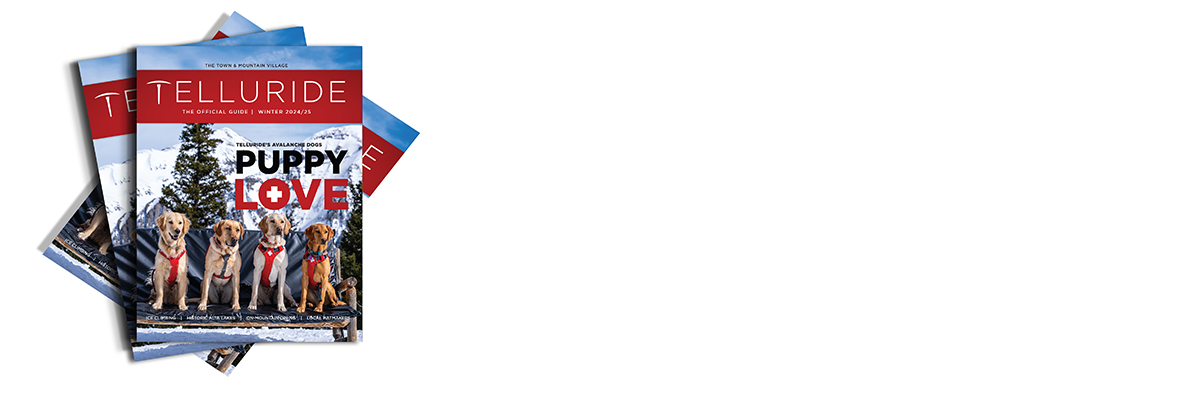
Official Visitor Guide
Telluride's Avalanche dogs are featured on the cover of the Official 2024-25 Winter Visitor Guide! It features this story, as well as dog bios and more. Click below to request one be mailed to your home.
